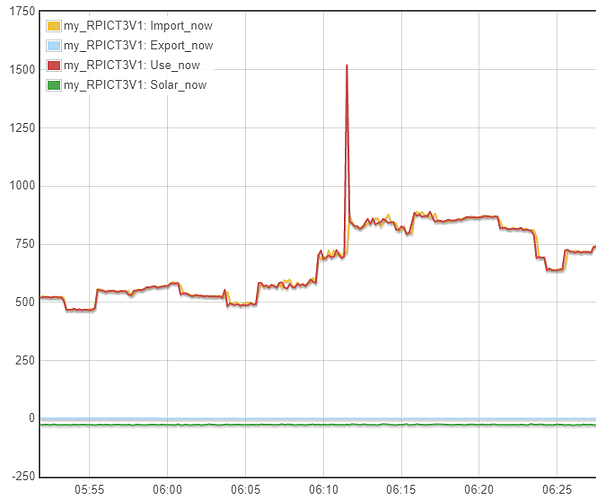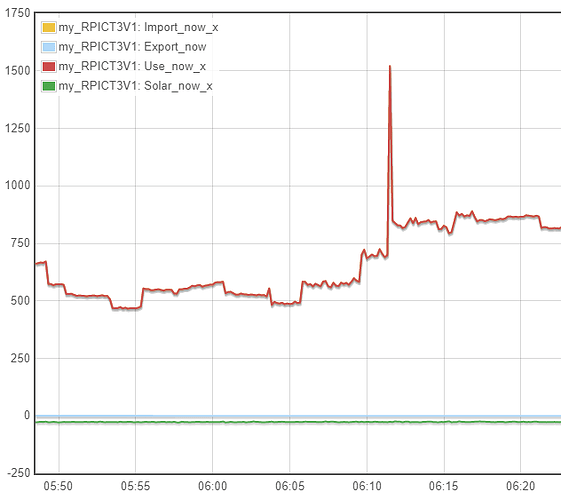Hi, I’ve set-up my energy monitoring so that I can see how much the solar is contributing and it is working pretty well. However, I have noticed a couple of blips in the graphs over the past couple of days and am wondering if the way that I have the feeds set-up is causing this. Let me explain:
I have two CTs, one monitoring the connection to the grid, the other the connection to the garage where the solar is installed. I have defined 4 feeds, ‘import’ as a +ve grid CT value, ‘export’ as a -ve grid CT value and ‘solar’ is the solar CT value. I calculate the other one, ‘use’, from grid CT value (+ve or -ve) plus solar CT value (if +ve); the solar CT value can be negative as there is a small amount of draw from equipment in the garage, and this is already being allowed for in the grid import value. Also, later this week we will be installing a battery system with the solar in the garage, so I want to record -ve ‘solar’ values so that I can see what we are using to charge the batteries at off-peak times.
Given that ‘use’ is calculated from ‘import’ and ‘solar’ I am struggling to explain why I see the blips in the graph (see attached), unless I the way that I have set-up the feeds is causing a processing issue.
Any advice gratefully received ![]()
It looks as if it is a timing issue - one value is one set of samples (~10 s) behind the other. You could try replacing “input” with the appropriate Feed value, if it exists. There might be a way with Virtual feeds - but I haven’t explored their properties or possibilities, so I don’t know.
Thanks for that, I guess I need to log ‘use’ from the same processing stream as ‘import’ to avoid this.
I’ve added a new processing stream that generates copies of both ‘import’ and ‘use’ feeds in the same flow to see if that makes any difference.
OK, that seems to be the issue - this graph is the old processing:
And this graph shows the modified processing for the same period:
You can see the lag on the ‘import’ (yellow) line with the old logic is not there with the new logic.
So I’m going to recode the processing to output all of the data values from the RP1 stream if I can.
(Unless someone knows a better way to achieve the same result).
Thanks again Robert.
If you own or look at the data available from an emonPi, you’ll notice the sum “power1pluspower2” is available. The addition is done in the “emon” front-end processor long before the numbers reach emonCMS, and it’s there for precisely this reason - to avoid the differing processing delays inside emonCMS.




